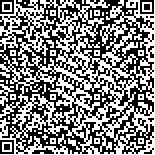| 摘要: |
| [摘要] 目的 探讨继发性甲状旁腺功能亢进症(secondary hyperparathyroidism,SHPT)手术中寻找甲状旁腺的技巧和方法。方法 回顾2014-08~2017-08手术治疗的100例SHPT患者的病历资料,总结分析手术中寻找甲状旁腺的经验技巧。结果 100例患者经病理证实切除380个病变甲状旁腺,其中有4个甲状旁腺者85例(85.0%),<4个者11例(11.0%),>4个者4例(4.0%)。上甲状旁腺共200个,主要位于甲状腺后悬韧带区域,共计170个(44.74%),另30个位于甲状腺下动脉分支处(7.89%)。下甲状旁腺,共140个,位于甲状腺下极背侧120个(31.58%),下极外侧20个(5.26%)。胸腺舌叶处30个(7.89%),气管旁和颈总动脉旁各5个(2.63%)。除异位甲状旁腺以及甲状腺外侧的甲状旁腺外,共有340个甲状旁腺与喉返神经有关系,上甲状旁腺200个中136个位于喉返神经外侧(68%),而下甲状旁腺140个中100个位于喉返神经内侧(71.42%)。结论 熟悉甲状旁腺解剖特点,术中探查首先按照甲状旁腺“三区”的分布特点从下向上探查,探查胸腺、气管旁和颈总动脉鞘为不可缺少步骤。采用“寻找、确认、保护”喉返神经三步曲避免喉返神经损伤。采用术中甲状腺局部注射纳米碳混悬注射液寻找甲状旁腺,能快速区分甲状腺、周围淋巴结、甲状旁腺。联合使用多种影像学定位诊断可有效辅助SHPT手术中寻找切除甲状旁腺。 |
| 关键词: 继发性甲状旁腺功能亢进症 甲状旁腺切除术 解剖 |
| DOI:10.3969/j.issn.1674-3806.2018.08.03 |
| 分类号:R 582.1 |
| 基金项目:广西科学研究与技术开发计划项目(编号:桂科攻1598012-15) |
|
| The experience of finding and excising the parathyroid glands in surgical treatment for secondary hyperparathyroidism |
|
LIAO Dan, ZHENG Hou-pu, ZENG Lin, et al.
|
|
Department of Thyroid and Breast Surgery, the First Affiliated Hospital of Guangxi University of Traditional Chinese Medicine, Nanning 530023, China
|
| Abstract: |
| [Abstract] Objective To explore the techniques for finding and removing the parathyroid glands in surgical treatment for secondary hyperparathyroidism (SHPT). Methods The case data of 100 SHPT patients who underwent surgical treatment in our department from August 2014 to August 2017 were retrospectively analyzed and the experience and techniques of finding and excising the parathyroid glands were summarized. Results 380 lesions of the parathyroid glands were excised in 100 cases and the results were confirmed by pathology. Of the 380 lesions, 4 parathyroid glands were in 85 cases( 85.0%), <4 parathyroid glands in 11 cases(11.0%), >4 parathyroid glands in 4 cases(4.0%). The upper parathyroid glands were 200 which mainly located in the region of posterior suspensory ligament of the thyroid glands(44.74%) and at the branches of inferior thyroid artery(7.89%). The inferior parathyroid glands were 140 which were located at the bottom of the thyroid gland(31.58%), on the outside of lower pole(5.26%), in the lingual lobe of thymus(7.89%), and by the side of the trachea and the carotid artery(2.63%). In addition to the ectopic parathyroid glands and the parathyroid glands outside of the thyroid glands, a total of 340 parathyroid glands have a relationship with the recurrent laryngeal nerve. Of the 200 upper parathyroid glands, 136 were located in the outside of the recurrent laryngeal nerve(68%). Of the 140 inferior parathyroid glands, 100 were located in the inside of the recurrent laryngeal nerve(71.42%). Conclusion The indispensable steps of finding the parathyroid glands include knowing well the features of parathyroid anatomical characteristics and the distribution characteristics of “three areas” of parathyroid glands. The use of “search, confirm and protect” three steps can avoid recurrent laryngeal nerve injury during the operation. The local injection of nano carbon suspension into the thyroid glands for finding the parathyroid glands during operation can quickly distinguish the thyroid glands from the peripheral lymph nodes and the parathyroid glands. The joint use of multiple imaging for localization diagnosis can effectively assist SHPT surgery in finding and excising the parathyroid glands. |
| Key words: Secondary hyperparathyroidism(SHPT) Parathyroidectomy Dissection |

